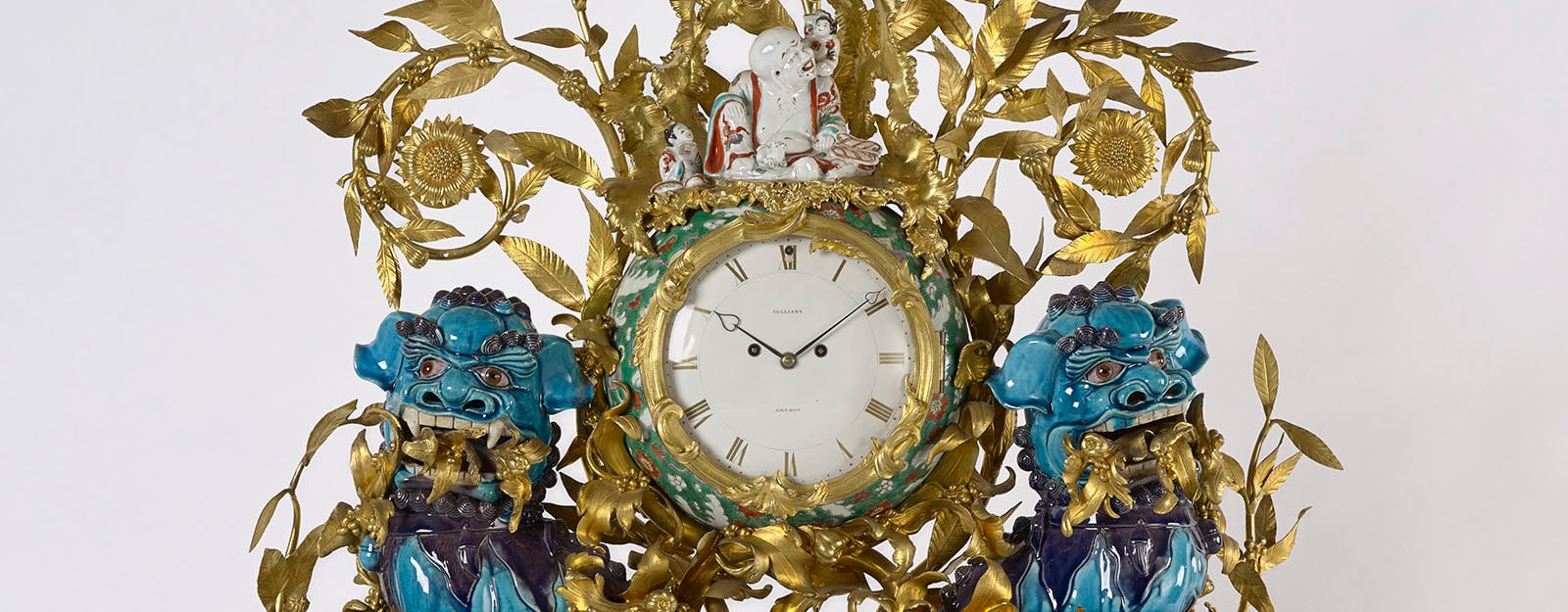
A Prince's Treasure
120 objects from the Royal Collection return to the Royal Pavilion in Brighton
Vase with mounts
bottle: 1700-50, mounts: 1800-25Porcelain with black glaze and gilt bronze | 58.5 x 31 cm (whole object) | RCIN 185
A bottle-shaped vase from the first half of the eighteenth century with globular body tapering to a broad cylindrical neck, the glaze paling towards the mouth and streaked with ‘hare’s-fur’ markings, after the style of Song dynasty Jian ware.
This vase can be identified with the ‘Black China Bottle for Mr Fogg’, listed in Vulliamy’s Ornament Book, for which mounts were supplied on 11 May 1811. There, no fewer than 11 craftsmen were noted as working on the mounts, with work beginning in December 1810, and against each craftsman’s name is noted their specific role in the mounts’ creation and the cost; this totalled £24.14.5 (National Archives C104/57(I), Ornament Book no. 4, p. 153). On the same day, Vulliamy sent his invoice to Mr Fogg: ‘China Man’: ‘For Mounting a Large Black China Bottle with gadroon Lip and deep lining square handles with Scroll ends ‘resting upon very handsome Antique Masks a Large Base on foot ornamented with null’d Mouldings the whole highly finished & strongly gilt in dead and burnished Gold at 32 Guineas £33.12.–’ (National Archives C104/58(II), Ledger no. 34, p. 311). He deducted 10 per cent (£3 7s), leaving the total at £30 5s. It was later recorded by Jutsham in his ledger: ‘This Vase was bought of Mr Fogg some Years since. sent to Brighton March 27 1819’, with a number of other items (Jutsham Dels I.312). The same distinctive masks on RCINs 185, 2346.1-2 and RCIN 3555 were first employed on a pair of Chinese dark blue porcelain jars supplied to Edward, Viscount Lascelles, by the Vulliamys. Their invoice of 15 April 1806 describes the masks on the body as ‘emblematical of Vegetation’ (National Archives C104/58(II), Ledger Book, no. 31, p. 327; c104/57(i), Ornament Book no. 1, p. 76).
Wares with the brilliant black glaze are known as ‘mirror black’, a very successful innovation of the Kangxi reign (1662–1722), which was achieved through a combination of cobalt blue and manganese purple. Others soon introduced, probably at the imperial kiln, include the so-called ‘tea dust’ and ‘robin’s egg’ glazes, rarely seen at the time in Europe, the first probably an attempt to simulate the effect of ancient patinated bronze. There are also pieces in the Collection with brown and clear white glazes.
Text adapted from Chinese and Japanese Works of Art in the Collection of Her Majesty The Queen: Volume II.







